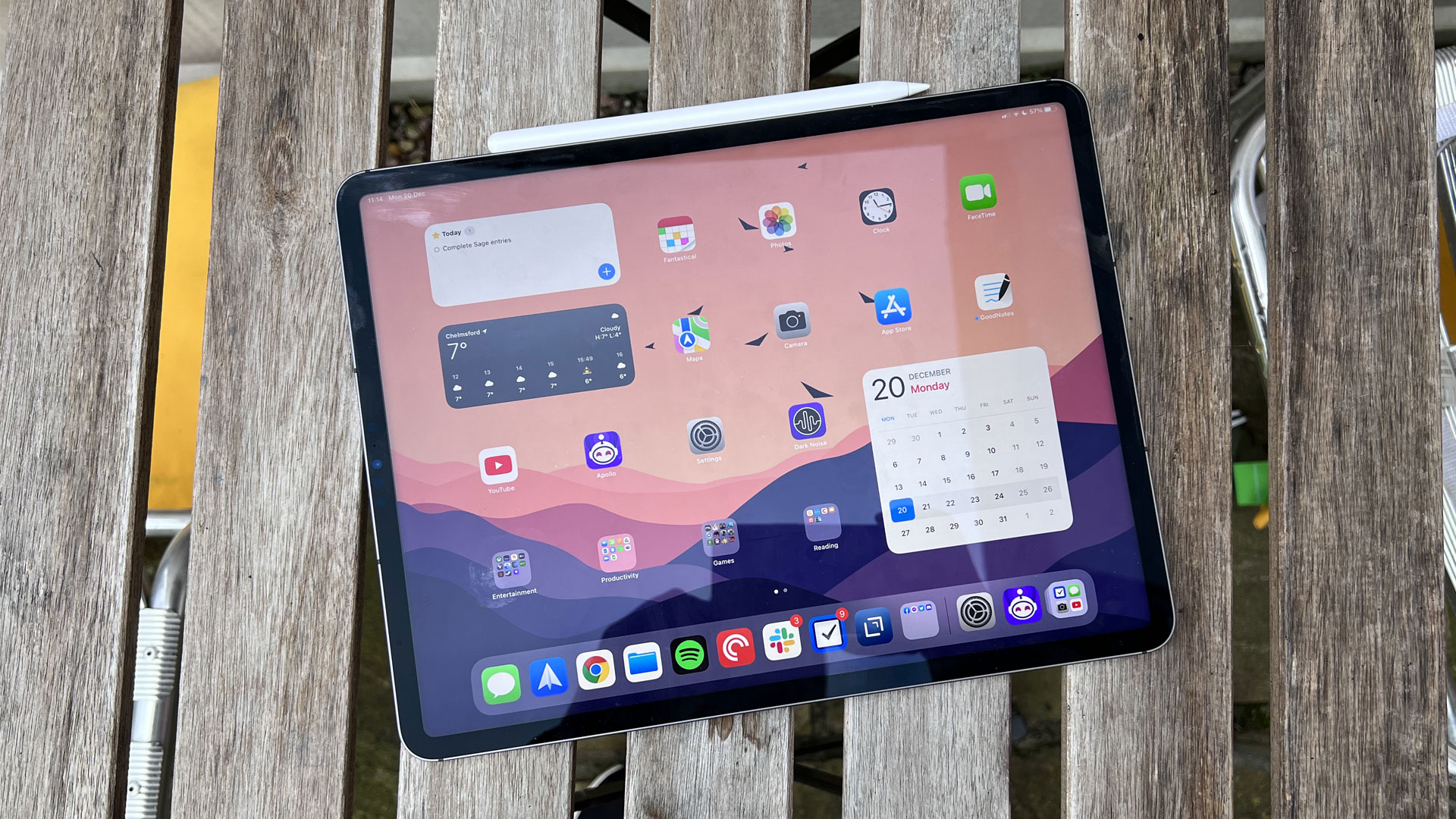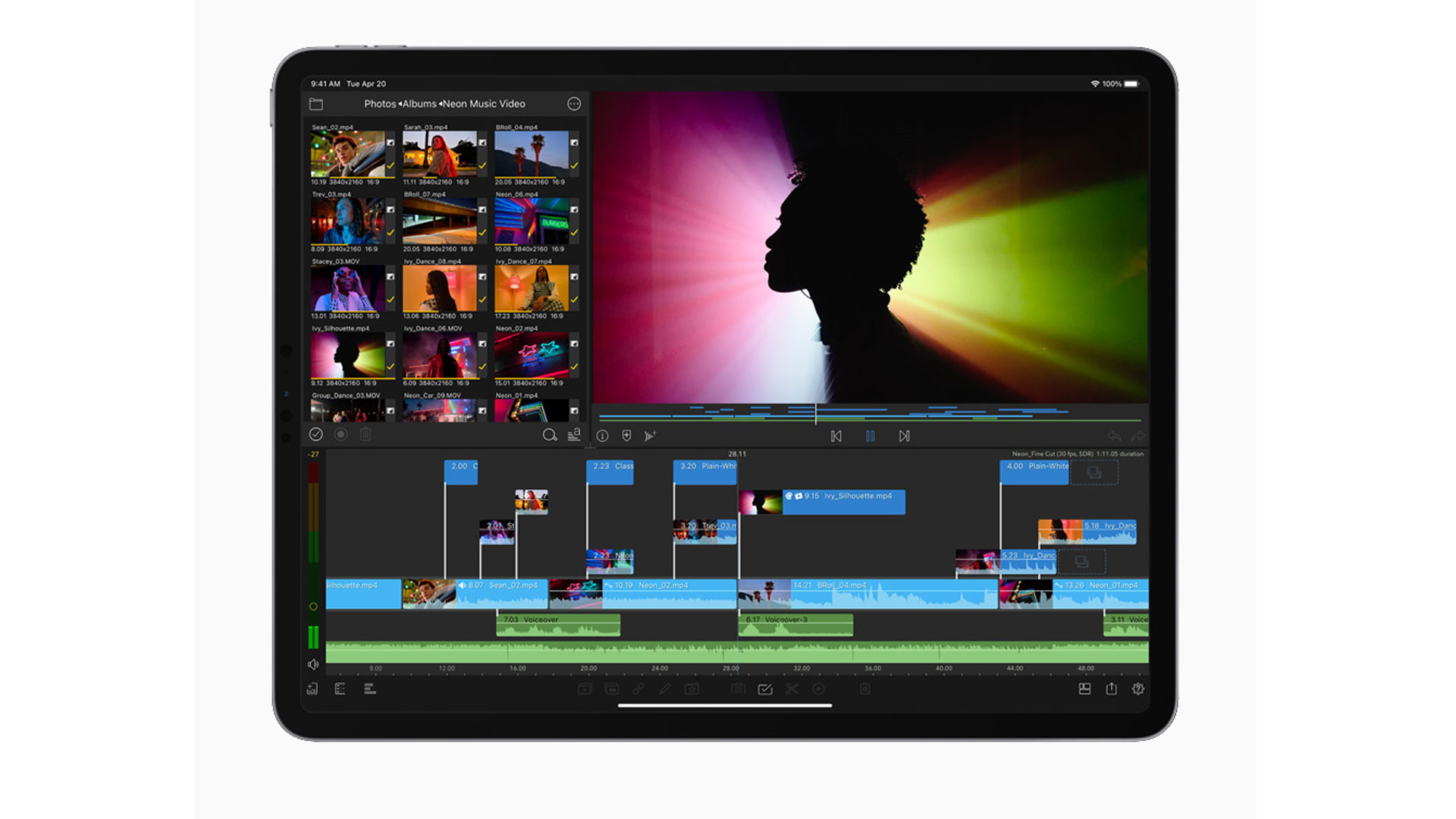Top Ten Reviews Verdict
The iPad Pro 2021 with M1 is the most powerful iPad you can buy, but it’s still an iPad. That may be what you need, but anyone looking for a laptop replacement may have a hard time justifying the cost – outside of specific workflows.
Pros
- +
Incredible performance
- +
New screen technology is fantastic (12.9-inch version only)
- +
Apple Pencil and Magic Keyboard support…
Cons
- -
…at a cost
- -
Still expensive
- -
iPadOS still feels closer to iOS than macOS
Why you can trust Top Ten Reviews
The most recent iPad Pro 2021 M1 is Apple's most recent attempt to answer the question 'when is a computer not a computer?' It's a question Apple has been trying to answer with its iPad line for years, with the market leader in tablets still arguably trying to find a niche for itself.
The good news is that since 2018, Apple's iPad Pro range has been incredibly powerful and portable, while rivaling its laptop range for grunt, and easily earning their place in our best tablets list. The bad news is that while iPadOS has branched off from iOS, it still feels like a half-step toward being a replacement for macOS.
While the 2020 iPad Pro was no slouch, Apple added its M1 processor to the iPad Pro line in 2021. That makes it the most powerful tablet in the world – but what you can do with that power remains constrained by the quirks of iPadOS.
iPad Pro 2021 M1: Design
At a glance, it’d be fair to say that the iPad Pro 2021 looks the same as the most recent iterations. That means that you can still use your peripherals, too, such as the Apple Pencil and Magic Keyboard.
Our 12.9-inch review unit looks essentially identical to its 2020 counterpart, with curved bezels maximizing the display on the front, and a pair of cameras on the back.

Size:11-inch and 12.9‑inch available
Capacity: 128GB, 256GB, 512GB, 1TB and 2TB options
Display Liquid Retina XDR display (12.9in model)
Chip: Apple M1 chip
Pro camera system: Wide and Ultra Wide cameras
12MP Ultra Wide camera, 122° field of view
Video recording: 4K video, 1080p HD video, 720p HD
Speakers: Four-speaker audio
SIM card: Nano‑SIM (supports Apple SIM6), eSIM6
Unlike iPhones, there’s no notch on the display, either, with FaceID built into the bezel on the narrower side. While some would argue it’d be better served on the longer edge for landscape orientation, we’d honestly not fussed either way – and it still unlocks the device quickly and securely. The front camera is also now 12MP, up from 7MP before.
The iPad Pro still comes in Silver and Space Gray, and you’ll find four speakers in the corners and a USB-C port on the bottom for charging and connecting peripherals. This latest model supports Thunderbolt and USB 4 for faster data transfer, too.
Sign up to receive the latest news, reviews, buying guides and deals direct to your inbox
One thing to note is that the 2021 iPad Pro is a slither thicker than last year’s (0.02 inches), and a smidge heavier, too (42 grams).
iPad Pro 2021 M1: Performance
The star of the show here is the M1 processor, which wraps up a CPU, GPU, and more into a single package. Bundling those together has made the iPad Pro more efficient, and the easiest way to demonstrate this is with the sheer volume of apps you can have open and suspended in RAM at any point.
The base model comes with an 8-core CPU, 8-core GPU, and Apple’s latest Neural Engine for machine learning, and for the first time in iPad history, 8GB or 16GB of RAM. Sadly, though, that’s not configurable – you’ll need to plump for the larger storage sizes to be able to get it (the iPad Pro now goes up to 2TB).
In real-world terms, if you’ve struggled to get your iPad to work up a sweat in the last few years, you’ll have to try even harder this time around. We ran a GeekBench 5 CPU test to see how powerful the tablet is, and the results were staggering. Last year’s iPad Pro 12.9-inch sits at 4785, whereas this latest model hits 7345 (higher scores are better). That’s incredible, for a device that’s as portable as it is.

Then there’s the new display. Dubbed “Liquid Retina XDR” by Apple’s marketing team, it offers the same 264 pixels-per-inch and 2732x2048 resolution as last year’s offering. What’s new is mini-LED backlighting which means at peak brightness it can hit 1600 nits. It’s not the kind of thing you’d necessarily spot until you crank the brightness up, but it adds a new degree of vibrancy when playing games like Wild Rift on the tablet.
Sadly, as powerful as the iPad Pro is (and has been for several iterations now), it remains tough to recommend as a replacement to your old laptop, no matter how powerful.
IPadOS is an offshoot of iOS, and it’s gotten better in the last few years. The biggest addition this year is a much more approachable set of multitasking tools that don’t rely on gestures, while Widgets can now be placed in more places for a much more customizable experience.
FaceTime can now isolate audio (think of it as noise-canceling for the mic), and Center Stage is a new feature that will enable the camera to pan and follow you around the room while you’re on a call.

There’s also a way to pull up a quick scratchpad for notes, as well as Focus Modes to let users more effectively gatekeep notifications.
These are all welcome features, but we still find ourselves reaching for a Mac to get work done. The Files app still feels half-baked in so many ways, while there’s still no Final Cut or Logic for the iPad Pro.
Then there’s external display support, which works but with huge black bars on the side of the screen, and we’re still waiting for multi-user support. If your workflow doesn’t rely on these, though, then the iPad Pro is a powerful workhorse — just expect the occasional bit of frustration when there’s no quick and easy way to rename a bunch of files o
- Related: Best Laptops 2022
Performance: Battery Life
Unlike the MacBook line and its adoption of the M1 hardware, there’s no jump in battery life here. You’ll still hit what Apple calls “all-day” battery capacity of around 10 hours on Wi-Fi when watching video content or browsing, and 9 hours when on cellular (with the 2021 iPad Pro offering 5G compatibility).
The good news is that USB-C charging is relatively fast with the included AC adaptor (yes, Apple still includes one for the iPad Pro), and given the M1’s power and brighter display it’s perhaps just as commendable that there’s no hit to battery life.
Battery Life: Price
This is where things get dicey for the iPad Pro. For $100 less than the iPad Pro 128GB wi-fi only version, you can get a MacBook Air with the M1 and 256GB of storage, and not need to pick up a keyboard separately (which remains $300 for the 11-inch version and $350 for the 12.9-inch version).
Factor that in, and the $129 Apple Pencil, and you’ll be dropping close to $1600 on a device that might not be the best option for you. That said, if you want the flexibility to carry the iPad Pro into meetings to share presentations or take notes, then it’s in a league of its own when taken strictly as a tablet.

Thankfully, the iPad Pro is essentially modular now, so the keyboard and Apple Pencil may not be required for you – and there are cheaper third-party options for both.
The iPad Pro with M1 is likely to be as future-proof as any piece of tech you can buy this year, but it’s also available with a smaller footprint with the 11-inch display. If you’re not likely to be doing anything to push it to its limits, then the iPad Air (fourth generation) and iPad (ninth generation) also offer iPadOS but at a much lower price point.
Should you buy the iPad Pro M1?
If you’re one of the lucky folks that can work entirely from an iPad, there’s no tablet out there that can go toe-to-tie with the iPad Pro M1.
Its display is best-in-class, it’s performance is off the charts, and it also offers the flexibility to pick up a keyboard, trackpad, or Apple Pencil in the future.
Sadly there’s very little reason to use much of the power of the M1 on an iPad, though, meaning it’s tough to recommend over the excellent M1 MacBook Air or MacBook Pro range.

Lloyd Coombes is Top Ten Reviews' Computing Customer Advisor, and a freelance writer with a specialism in tech, gaming, and fitness. Since starting out as a blogger, he’s written for sites like IGN, TechRadar, and more.
An expert on all things Apple ever since he got a second-hand iMac, Lloyd can regularly be found testing software on iPhone, iPad, Apple Watch and Mac — when he’s not testing the platforms themselves, that is. He’s also Dexerto.com’s Games Editor, and a podcaster.
When he’s not writing, you can probably find him running after his son, playing Destiny 2, or at the gym.

